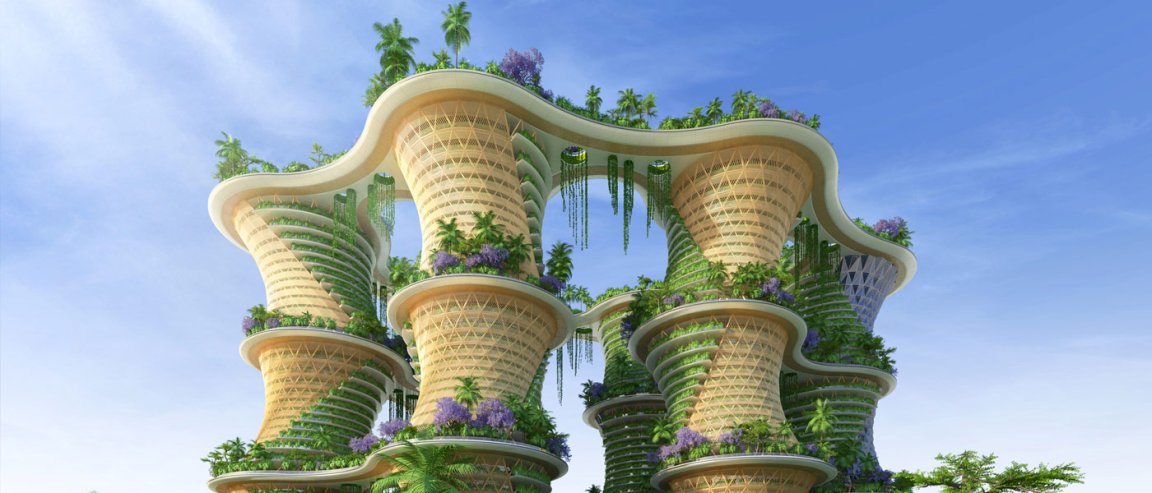
MAKING CITY LIVING SUSTAINABLE
Cities are often dull, bleak sprawling masses of concrete. While there may be parks and greenery, such as lawns and gardens, there is still a severe lack of green spaces in most urban areas. To address this gap, cities are beginning to experiment with vertical forests, in which skyscrapers and condominium towers are covered with a façade of trees and shrubs.
Plans developed by Paris-based Vincent Callebaut Architectures for a vertical ‘eco-neighborhood’ take the concept further. With the help of Indian agroecologist Amlankusum, they are planning to build a compound outside of New Delhi, one of the world’s smoggiest zones, called the Jaypee Green Sports City.

Named Hyperions, the area would be composed of six 36-story towers that will be linked by common green spaces, walkways and common eco-conscious utilities that would ensure a greener and healthier environment for the residents.
Other innovative details were built in to the compound to optimize energy efficiency and minimize environmental impact. The superstructure will use locally sourced solid wood while the substructure will be composed of steel and concrete with earthquake-resistant properties. By using wood, it minimizes the environmental footprint of the maintenance of the building.

Furthermore, energy needs of the complex will be produced on-site with various methods. For example, lampposts will provide light using power generated by wind turbines embedded within them. Solar panels are also embedded within the façade of the building.
A GREEN VERTICAL VILLAGE

The design takes advantage of its surroundings to blend in and to make full use of all potential for green space. The concept of the design is a ‘vertical village’ with flexible spaces for businesses and offices located near the solar facades while living spaces are placed near hydroponic greenery balconies.
The designers also made the compound with the goal of creating an independent and self-sustaining community. Rooftops are planted with trees and vegetation to maximize green output with a ‘permaculture greenhouse’ ensuring self-sufficient food production. Community orchards also become dual spaces serving both as food production and community gathering spaces.

To account for the high and lows of the changing climate, the designers turned to creative solutions for cooling and heating. A ‘phytopurification lagoon’ at ground level serves as both a reflecting pool and a water source while the entrance lobby is filled with more vegetation to provide a cooler climate.
The end result is a compound that feels both controlled and organic. While no solid dates have been given for construction, it’s not hard to see cities in the future turning to designs such as these.